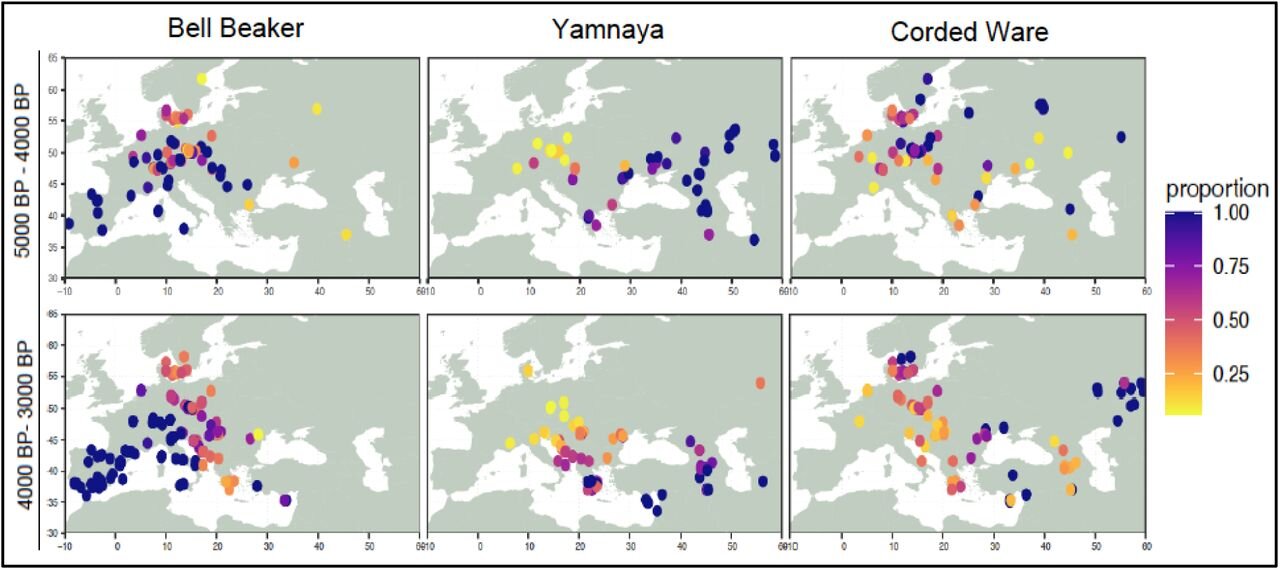cross-posted from: https://quokk.au/post/1499265
What a Christmas present!
Italo-Celtic is a hypothetical branch of the Indo-European languages. If that branch is real, it means that the Italic and Celtic languages are closer to each other than to other Indo-European languages.
This hypothesis has been raised multiple times in the past, due to a few shared morphological features between Italic and Celtic languages; for example, the *-ism̥mo- superlative. But that’s on its own weak evidence, so this genomic data makes wonders to reinforce this hypothesis.
And also to bury the competing (IMO rather silly) Italo-Germanic one.
Graeco-Armenian is similar to the above, but between the Hellenic languages and Armenian. There were lots of competing hypotheses “tying” both branches to other “random” Indo-European branches; for example I’ve seen Indo-Greek, Italo-Greek, Armeno-Germanic, Armeno-Albanian…
Thank you for fixing the sensationalist article title.
You’re welcome. It was pissing me off, too - I love the discovery that they made, but when I read “Indo-European linguistic origins” I immediately thought about something earlier, like tying the family to other languages.
I think that the coolest part of those findings is that we can actually start reconstructing Proto-Italo-Celtic and Proto-Graeco-Armenian with some certainty, without finding too many spurious patterns. That would be specially useful to reconstruct the Proto-Indo-European stops; I’ll show it with a table, with the stops of the current PIE reconstruction and the typical reflexes into four languages representing those branches:
PIE Latin Old Irish Greek Armenian *p t ḱ k kʷ /p t k k kʷ/ /∅ t k k k/ /p t k k p/ /h tʰ s kʰ kʰ/ *b d ǵ g gʷ /b d g g gʷ/ /b d g g b/ /b d g g b/ /p t ts k k/ *bʰ dʰ ǵʰ gʰ gʷʰ /f f h h f/ /b d g g g/ /pʰ tʰ kʰ kʰ pʰ/ /b d dz g g/ The first thing that I notice in this table is that Armenian is satem and Greek is centum. And yet they’re more related to each other than to their respective groups? This means that the centum/satem division was never different IE branches, it was simply an areal feature.
For most part Latin transformed the so-called “breathy voiced” series (third line) into a bunch of fricatives; in some situations they became plain voiced consonants, but I didn’t add them to the table. In the meantime the Celtic languages consistently merged that series into the plain voiced ones. The difference in outcomes shows that Proto-Italic-Celtic still somehow kept the distinction; and this makes me suspicious if that series is composed of breathy voiced consonants at all, given the lack of symmetry I’d expect them to be relatively short-lived. Greek vs. Armenian makes it even more puzzling - for Greek that series is the one with the biggest voice onset time, but for Armenian it’s the one with the lowest!
Very interesting, thank you for the post and the elaboration!




